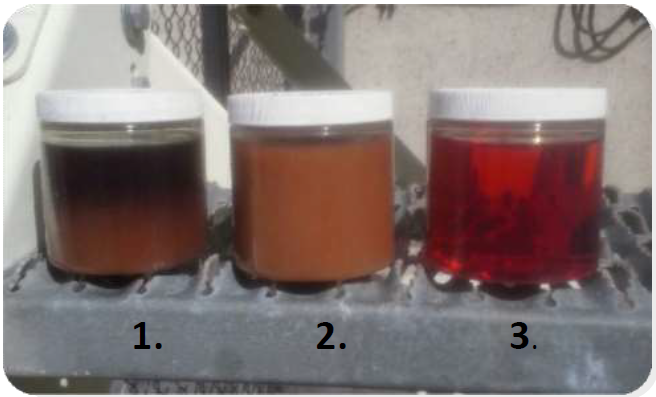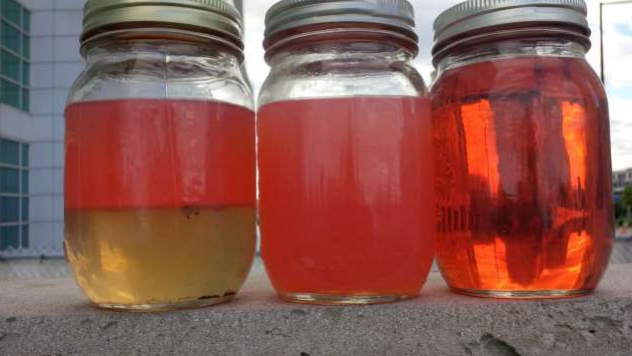Fuel Tank Hygiene
What is Fuel Tank Hygiene?
Fuel Tank Hygiene represents the level of health and cleanliness of a fuel tank. It is imperative for a Fuel Tank owner to make sure his fuel tank undergoes proper hygiene techniques and practices. This keeps the tank clean and in a healthy state. Fuel Tank Hygiene is nothing new, however recently it became more and more important once the new ULSD (Ultra Low Sulfur Diesel) fuels were inserted into the market. It contains less sulfur than normal, burns cleaner, however it has some downsides to it as well.
One of the most notable downside effects is the fact that it’s easily affected by thermal stress. As discussed in the article “Fuel Tank Maintenance“, presence of air inside a fuel tank enhances the forming of condensation. Once condensation appears, rust or microbial/algae formations can appear. In fact, the biggest problem besides rust and microbial formations is that ULSD is more prone to water separation. This degrades the fuel quality and significantly shortens it’s storage life.
How can you tell if the fuel in a tank is healthy?

Unfortunately in today’s market, you will find that most of fuel suppliers don’t undergo fuel tank hygiene procedures. They understand the issues, but solely choose to focus on volume instead of quality. They rely on the mere fact that most fuel consumers are not savvy when it comes to fuel tank maintenance. It’s also harder to ‘prove’ that a piece of equipment or vehicle problem was caused by bad fuel at one particular fuel source. It’s better to save yourself some money and headaches by treating the fuel you use, yourself.
Eye level, fuel degradation is not that easy to spot. One needs to take samples out from different depths of the tank to truly catch a glimpse of the horror.
This picture above portrays fuel that has gone bad during storage.
- Bottle #1 – Taken from the tank’s bottom (shows strong evidence of microbial growth)
- #2 Bottle – Sample showing water emulsification
- Bottle #3 – Shows a clear and bright fuel which looks healthy but is very unlikely to meet ISO 4406 standards. These standards are becoming increasingly more important to truck and equipment health.
Besides these visible issues, there are some microscopic changes as well. Microbes and algae affect fuel by:
- Reducing corrosion inhibitor & anti-oxidant effectiveness of fuel
- Reducing lubricity & stability of fuel
- Increasing Peroxides and TAN(total acid number) levels
- Increasing corrosion
Bottom line… not keeping a standard of fuel tank hygiene is bad for fuel and bad for business.
How can these problems be reversed?
Thankfully, there are solutions to these issues.

From left to right – Untreated fuel, during treatment, after treatment
Fuel can be treated with a quality fuel additive that will restore some of the fuel’s lost qualities and stabilize it to ensure that future problems like water separation won’t appear again.
After this, the water present in the tank should be removed together with the microbial/algae formations. To do this, the fuel tank should undergo a fuel tank filtration procedure that will remove water down to micron levels.
One such quality fuel additive is CleanBoost® Maxx™. A fuel supplement and combustion catalyst that treats the fuel and makes it more efficient by stabilizing it and adding lubricity. In a nutshell, it is the formula that regenerates fuel to its initial intended state, helping it remove harmful water condensates, impurities and other nasty elements. It is currently used in marine, shipping, power generation, mining, construction and ground transportation.
Don’t ignore
If you or your company/organization has the duty of storing fuel, you should forward this article to the person in charge. Have them feel free to ask questions, comment on this post or otherwise reach out. Fuel tank maintenance and hygiene is a real thing with real benefits as well as costly issues and problems if left untreated or unmanaged.
An additive such as CleanBoost® Maxx™ is super concentrated and will treat 30 gallons of gas/diesel per each 1 oz of additive. This will ensure that you get the most bang for your buck, with an increase in power and/or MPG to all end users. Also running cleaner fuels will reduce your emissions and maintenance to keep your car, truck, SUV, backhoe, snowblower, ATV, motorcycle, weedeater, generator, RV, boat, you name it, etc… if it burns fuel, it will run cleaner and more protected than without such a quality fuel additive. Get CleanBoost® Maxx™ today.
About the Author
Tech Guy
Automotive enthusiast, passionate about Jeeps, hot-rods, turbos, performance, efficiency, diesels, fuels, high performance oils, additives and anything with an engine.

